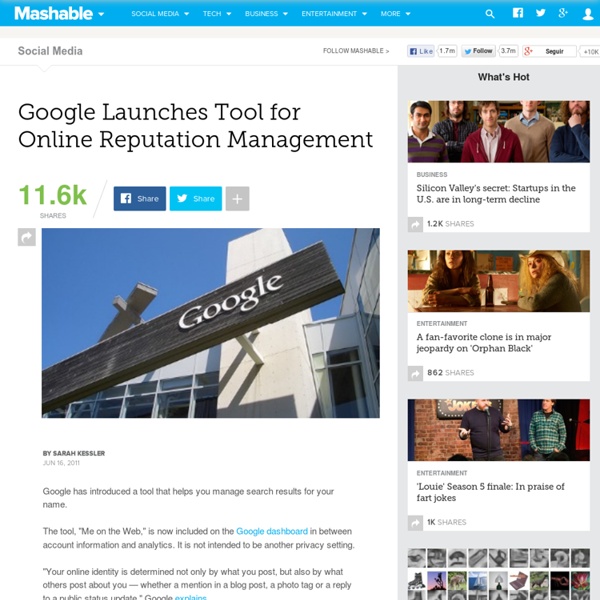Google Launches Tool for Online Reputation Management

A Collection of Social Network Stats for 2010
For the third year running (see 2008, 2009) I’m going to aggregate stats in the social networking space on a single blog post, and update it through the year. Data fiends should bookmark this post for future reference. Stats are important –but on their own, they don’t tell us much Stats on social networks are important, but don’t rely on them alone. How to interpret stats Numbers don’t tell us much without insight and interpretation, in fact, you’re going to see conflicting numbers of usage from many of the agencies and social networks themselves. A Collection of Social Network Stats for 2010 I’ll be updating this post throughout the year, bookmark it, and share it with others. Comparison: All Social Networks “The data doesn’t deny that Facebook has come to dominate social networking in the US, and overtook MySpace in 2009. By Region and Geography Facebook Facebook keeps it’s stats page updated, and boasts over 350mm users. LinkedIn Tagged Twitter Yelp YouTube Mobile, Desktop and Social Networks
A Guide to Protecting Your Online Identity
Leah Betancourt is the digital community manager at the Star Tribune in Minneapolis, Minn. She is @l3ahb3tan on Twitter. Being online is like being in public. Nearly anything that gets posted can come back to haunt you. Problems start when what’s online isn’t accurate, isn’t yours, or worse, isn’t yours anymore. I interviewed some online identity experts, and some of what they said makes the need for preemptive management obvious — if someone’s LinkedIn profile states, for example, that he or she was employed at a job that you in fact held at the time, there may not be much you can do. William McGeveran, a law professor at the University of Minnesota Law School, wrote in an e-mail interview, that so far, the law does a terrible job of recognizing the distinct problems of online identity. Online identity management and personal branding, that includes social media optimization, can work to fight online identity theft. Brandjacking Risk Take the recent #AmazonFail incident. Rebecca L. 1. 2.
US Rolls Out Plan for Internet Identity
I understand that, but I have reservations about this for many reasons. From a security aspect, I fail to see how this will give me greater protection by having one hackable account; unless such a foolproof method of identity verification could be made. In other words; I understand that I may need to have a smart-card (not my phone - too misplaced), biometrics, or some other form of one location/ one person access; most will require new hardware. This in no way suggests that it cannot be easily hacked - especially if they are relying on information that I can purchase on anyone for 30.00 online. What needs to be addressed are as follows 1) Will I have the means to follow up with hacking losses, or will Visa simply not take my dispute because Verisign said it was me. 3) Do we have the current hardware sophistication ubiquitously available to do this within the next 5 years So what is the value added service for the consumer?
Ma présence sur le Web : Google Dashboard - Centre d'aide Comptes Google
Ma présence sur le Web vous permet de recevoir des notifications lorsque vos données personnelles s'affichent sur le Web. Cette fonctionnalité sert à vous alerter lorsque vos informations personnelles, votre adresse e-mail ou votre numéro de téléphone notamment, sont publiées en ligne. Pour créer des alertes, procédez comme suit : Connectez-vous à votre compte Google, puis accédez à la section Ma présence sur le Web. Cliquez sur Gérer mes alertes Web. Pour afficher les informations à votre sujet existant déjà sur le Web, cliquez sur Rechercher.
Related:
Related:



